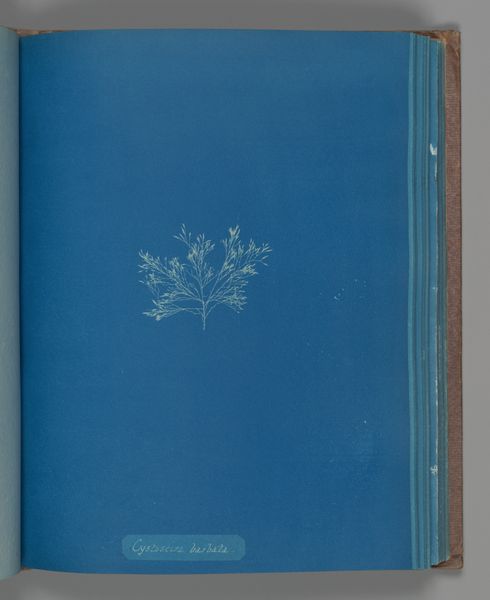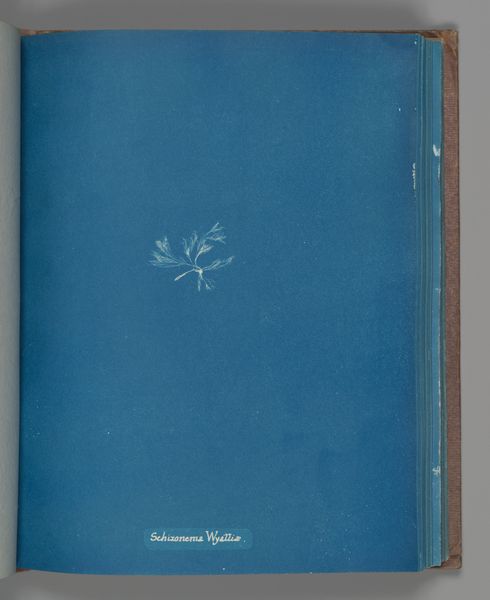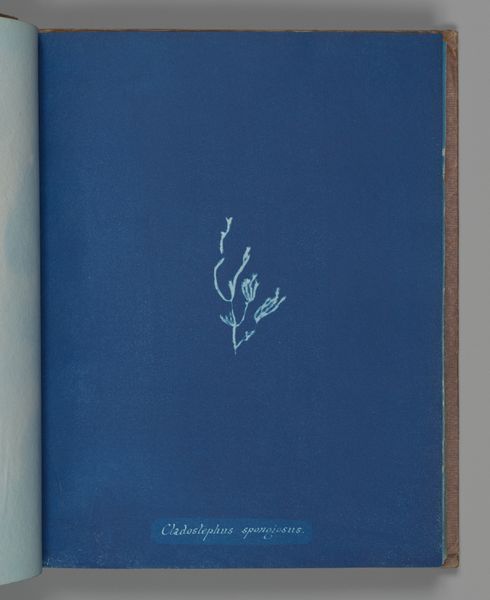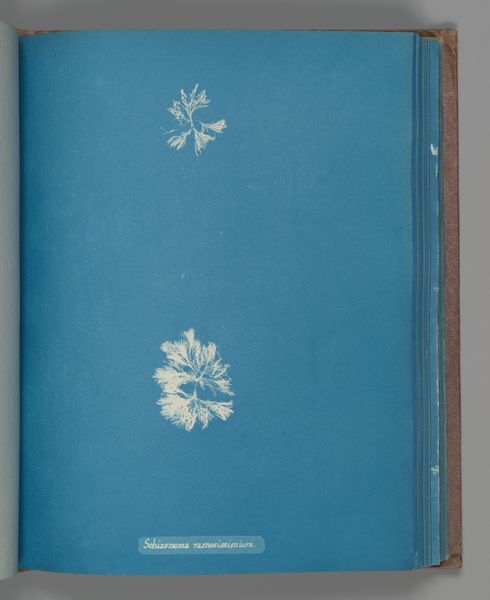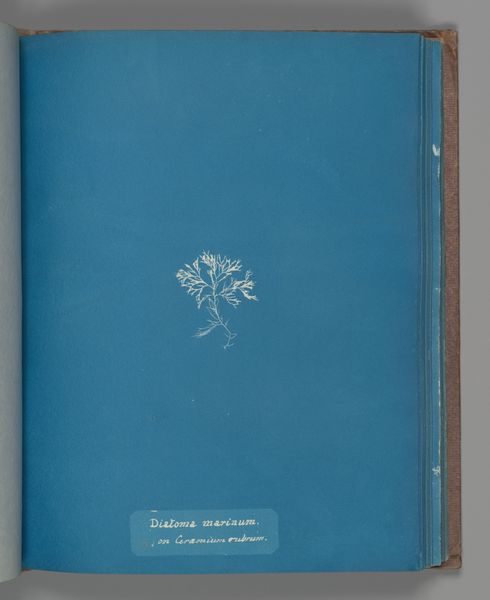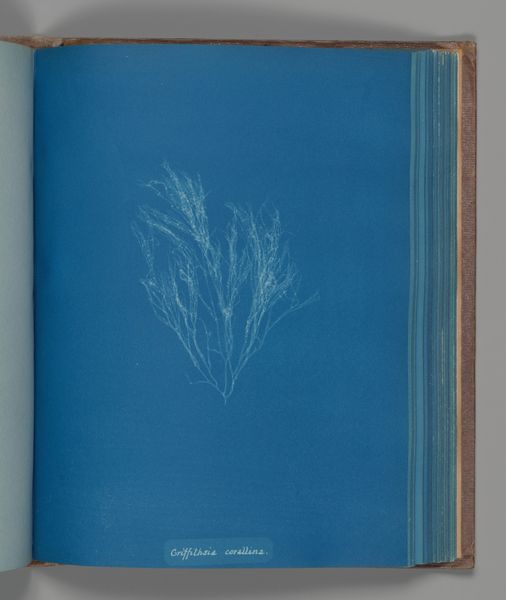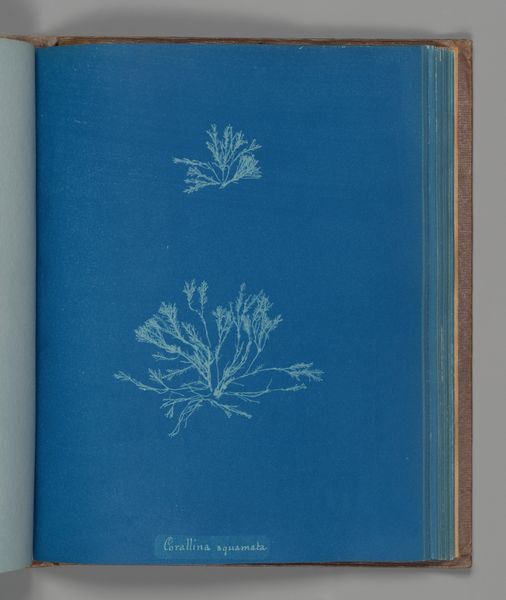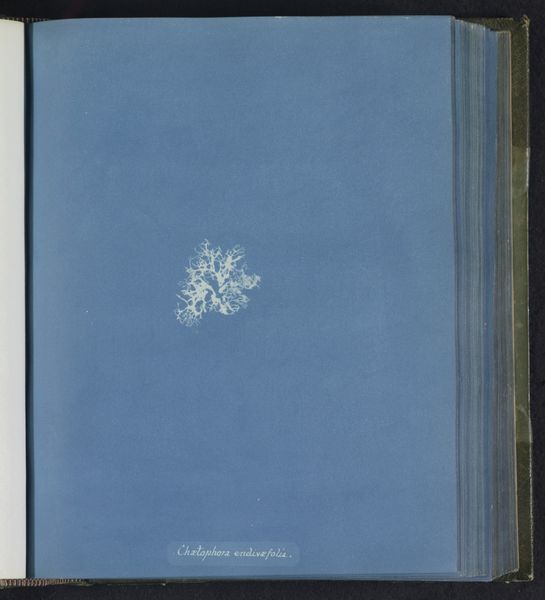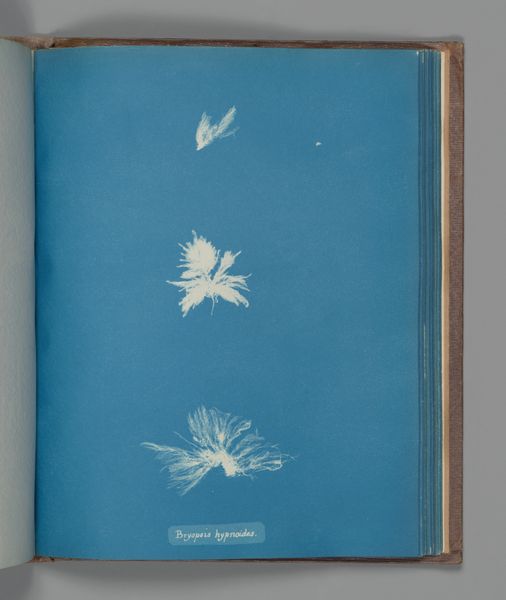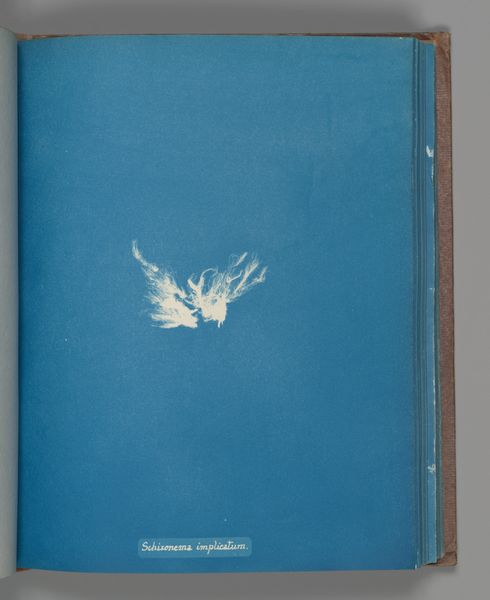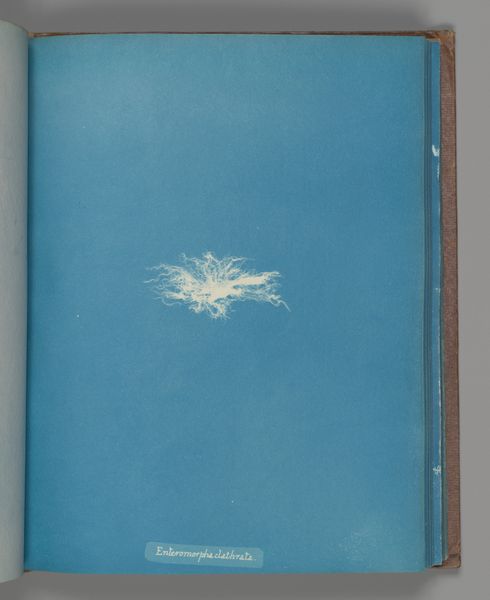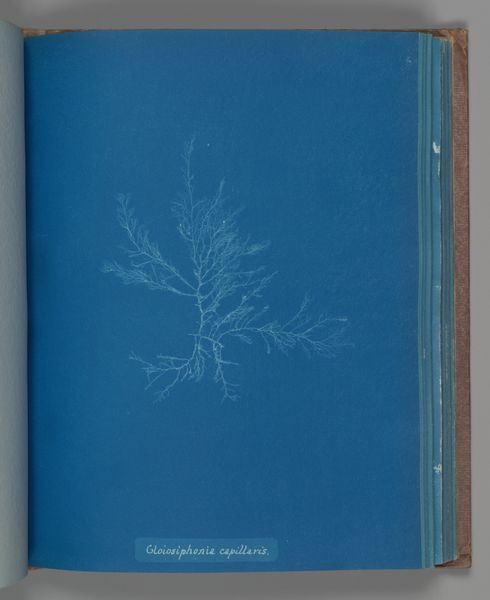
print, paper, cyanotype, photography
#
still-life-photography
# print
#
paper
#
cyanotype
#
photography
#
naturalism
Dimensions: Image: 25.3 x 20 cm (9 15/16 x 7 7/8 in.)
Copyright: Public Domain
Editor: Here we have Anna Atkin’s “Sphacelaria filicina,” a cyanotype from between 1851 and 1855. The ghostly white seaweed against the rich blue is striking. What stands out to you in this early photographic print? Curator: The cyanotype process itself is fascinating. Iron salts, paper, sunlight— humble materials transformed by labor and time. Atkins, a botanist, used this method not just for aesthetics, but for scientific documentation, collapsing traditional hierarchies between art, science, and craft. How does that connection between science and art inform your interpretation? Editor: It makes me think about accuracy and objectivity versus artistic expression. Was she primarily concerned with recording the seaweed, or creating something beautiful? Curator: Consider the context. Photography was relatively new, perceived more as a tool than an art form. Atkins’ work challenges that. She’s using a scientific process, but her choices—composition, the blue tone—elevate the subject. What impact do you think the wide availability of photographic tools today has on the way we view her images now, compared to their initial audience? Editor: I guess they would be more unique, considered that photography was not wide spread. The handmade quality, combined with its scientific intention, seems really important now. Curator: Precisely. By considering the materials, labor, and social context, we move beyond a simple appreciation of the image to a deeper understanding of its cultural value and impact. The work questions the artistic conventions by elevating scientific production and experimentation with humble means and media. Editor: That’s really broadened my perspective. I see now how the artistic process and context contribute to its impact! Curator: Indeed! By understanding how materials are worked to depict an object is essential to decode and appreciate the artifact’s conceptual value.
Comments
No comments
Be the first to comment and join the conversation on the ultimate creative platform.
